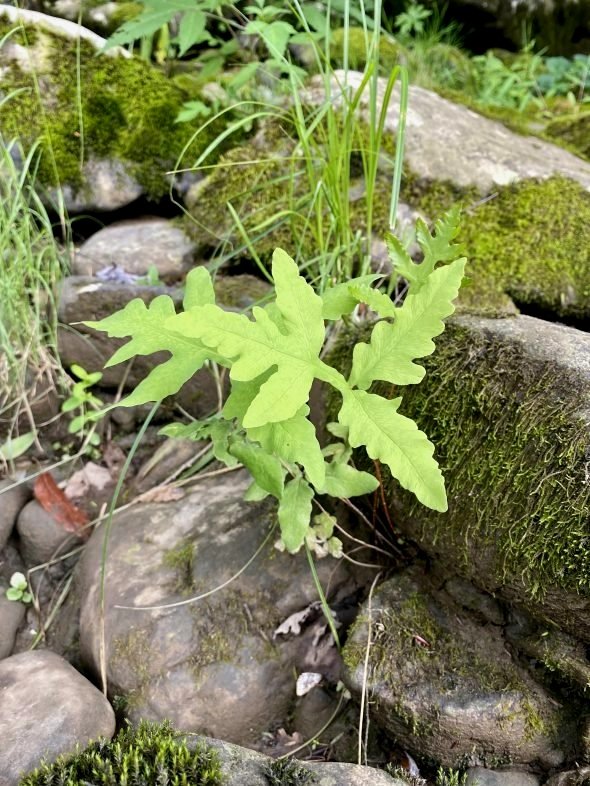
Polypodiophyta
(Class)
Ferns
Cinnamon Fern
Osmundastrum cinnamomeum
A species that predates human history, fossils of the Cinnamon Fern have been dated back to 70 million years ago. Today, Cinnamon Fern is still in existence and can be abundant around the Blackwater Canyon. Named after the coloration of the spore-bearing fertile fronds of the fern that shoot up appearing to be covered in a cinnamon dusting. Fiddleheads emerge in the spring from the base of the plant giving way to the sterile leaves of the plant that many individuals often associate with ferns can grow up to 5 feet long making this one of the largest and most noticeable ferns in our region. The fronds of the fern turn yellow in the autumn, another touch to our truly mesmerizing autumn palate. These leaves are arranged pinnately-compound and grow erect. This species grows in clumps and grows from 2 to 3 feet in height but can reach heights of 6 feet, growing in moist areas near streams and boggy situations to shaded ledges of the Canyon.
Dryopteris intermedia
Intermediate wood fern is a classic in the Blackwater Watershed. Another name for these dark green plants is the evergreen wood fern because they retain their green foliage throughout the winter! These ferns grow in a singular rosette and are common in moist, nutrient-rich shaded areas.
Intermediate Wood Fern
Sensitive Fern
Onoclea sensibilis
These brightly-colored ferns can be found all over the Blackwater Watershed. They range in size greatly from a few inches to a few feet! Sensitive ferns like it wet and establish near stream banks, springs, and other wetlands. Their name is derived from their sensitivity to the very first frost of the season, which causes the entire plant to die back for the year.




